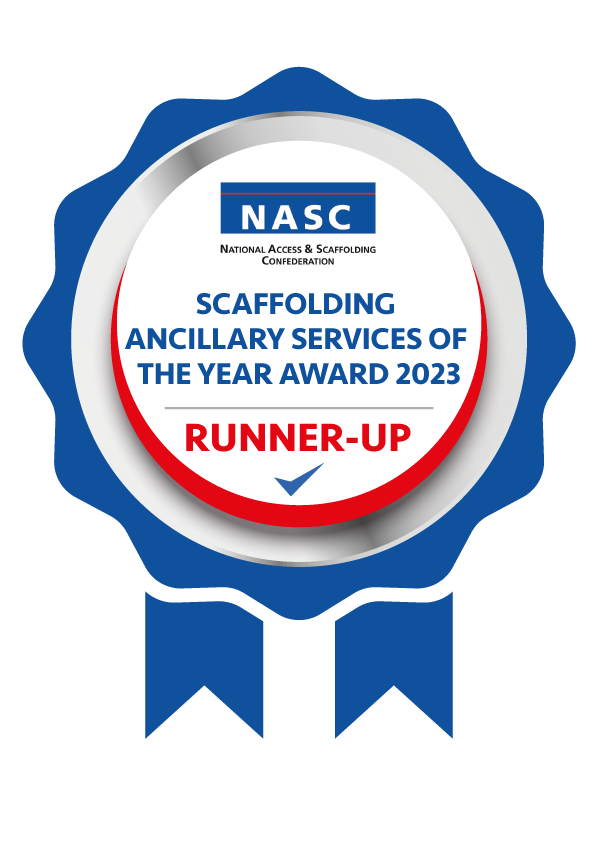Why Every Scaffolding Company Needs a Strong GRC Framework –
Why Every Scaffolding Company Needs a Strong GRC Framework

In today’s increasingly regulated construction environment, scaffolding companies are faced with a host of challenges, ranging from navigating complex regulations to managing risks and making strategic decisions.
A robust Governance, Risk Management, and Compliance (GRC) framework offers a unified approach to tackling these challenges, driving safety, efficiency, and long-term success. In the scaffolding industry, where safety and regulatory compliance are critical, adopting a GRC framework is essential for mitigating risks, ensuring project success, and fostering a reputation for reliability.
What Does GRC Mean for Scaffolding Businesses?
A Scaffolding GRC framework helps scaffolding companies effectively manage governance, risk, and compliance, ensuring safety, efficiency, and regulatory adherence.
Governance:
- Governance establishes policies, roles, and processes to align daily operations with strategic goals.
- Ensures safety protocols, project timelines, and quality standards are consistently met.
- Protects workers and the public by enforcing best practices in safety, quality control, and project management.
Risk Management:
- Risk management identifies and mitigates potential hazards to maintain project continuity.
- Addresses risks such as structural instability, equipment failures, and adverse weather conditions.
- Reduces accidents through regular site inspections, employee training, and the use of high-quality equipment.
Compliance:
- Compliance ensures businesses adhere to laws, safety regulations, and industry standards.
- Involves meeting safety codes, environmental regulations, and building requirements.
- Requires ongoing audits, training, and regulatory updates to prevent issues.
Failure to comply can lead to legal penalties, fines, and significant reputational damage, putting both projects and businesses at risk. A strong GRC framework is not just beneficial, it is essential for ensuring safe, efficient, and legally compliant scaffolding operations.
Key Benefits of a Strong Scaffolding GRC Framework:

A well-executed Governance, Risk Management, and Compliance (GRC) framework does more than ensure regulatory compliance—it enhances safety, efficiency, and business growth. Here’s how:
1. Strengthened Compliance and Safety: A structured GRC approach ensures adherence to industry regulations and best practices, reducing legal risks and workplace accidents while fostering a safer working environment.
2. Proactive Risk Management: By identifying and addressing hazards early, scaffolding businesses can prevent costly incidents. A clear risk strategy improves decision-making and enhances overall project success.
3. Streamlined Governance: Effective governance policies improve operational efficiency, accountability, and ethical conduct. Real-time data tracking helps businesses maintain high safety and quality standards.
4. Enhanced Reputation and Trust: Demonstrating strong GRC commitment builds credibility with clients, regulators, and employees. Transparency and compliance instil confidence, making businesses more attractive partners.
5. Competitive Advantage: Companies that prioritise GRC stand out in the market, appealing to clients who value safety, reliability, and regulatory adherence. A solid GRC framework drives long-term growth and profitability.
6. Continuous Improvement: Ongoing risk and compliance monitoring leads to constant enhancements in project management, quality control, and overall business performance.
As industries and regulations evolve, scaffolding companies face increasing administrative burdens and compliance challenges. However, a strong scaffolding GRC Framework strategy is more than just a legal necessity, it’s a competitive differentiator that enhances efficiency, safety, and long-term success. With the right technological tools, businesses can turn compliance challenges into opportunities, streamlining operations while ensuring they remain efficient and future-ready.

Conclusion: Achieving Long-Term Success with GRC
Incorporating a GRC framework is not just about staying compliant, it’s about building a sustainable and successful scaffolding business. With the right technology and practices, scaffolding companies can enhance safety, improve operational efficiency, and foster a culture of continuous improvement.
Using tools like SMART Scaffolder, scaffolding businesses can integrate governance, risk management, and compliance seamlessly into their operations, positioning themselves for long-term success and industry leadership. To find out more on how SMART Scaffolder can help benefit your business, click here to get in touch.
Recent posts
Why Tie Testing Matters: Staying Compliant with NASC TG4:25
October’s Project of the Month: Amphibian Scaffolding at Chartwell Hockley Industrial Centre
Why Harness Inspections Matter: Staying Compliant with NASC SG16:23
September’s Project of the Month: OAK Scaffolding Limited: Caterham School
Why the Scaffolding Industry Must Embrace Technology
August’s Project of the Month: SAY Access Limited at Appleton Academy
Sustainability Through Innovation in Construction:
Project of the Month: July – JRS Scaffolding
Case Study: Transforming Scaffold Inspections at Enigma Industrial Services
Bridging the Skills Gap in Scaffolding: How Technology Can Attract the Next Generation
Project of the Month – June – Blenheim Palace
SMART Scaffolder’s 20th Anniversary event
Engineering Smart Solutions in Tight Spaces: PJ Slater’s Stamford & Rutland Hospital Project
Sonic Scaffolding 2000 ltd is driving Project Success with SMART Estimator’s Accurate 3D Planning
Infiniti Scaffolding LTD: Boosting Efficiency with SMART Inspector: A Success Story
Building Safer Heights: Tackling Falls with Better Scaffolding Practices
The Future of Scaffolding Workflow software
SCA Group’s Centenary Quays Project: Project of the Month January 2025
Battling the Elements: How to Keep Your Scaffolds Safe in Adverse Weather
Navigating Scaffold Safety: The Critical Importance of Handover Certificates





